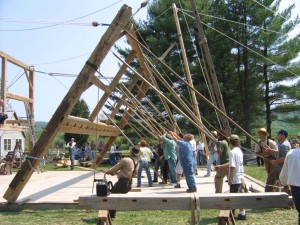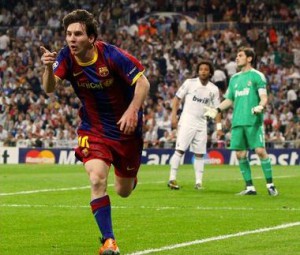What Women Understand About Effective Modern Leadership
In his wonderful book, Stumbling on Happiness, Harvard researcher Daniel Gilbert points out that often our best bet for making decisions we will both enjoy and benefit from, is to ask our peers who have made similar decisions. Gilbert’s advice before embarking on an important decision is to ask someone whom we trust, who has also made the decision we are contemplating, and follow their advice. And, as he points out, once we learn their point of view on the matter, we often refuse that advice on the grounds that our situation is different. We reject their advice claiming, “But I’m unique! How could they possibly know what’s best for me?”
Research finds that this inability to accept outside advice and insight only increases with power. The more power and resources controlled by an individual, the more confident they tend to be in their decision-making, and less they tend to listen and be influenced by outside opinions and points of view. However, in their study women were often an exception.
In two phases of the study, women tended to be more open to outside points of view regardless of their position of power within the organization. In their study entitled “The detrimental effects of power on confidence, advice taking, and accuracy,” Kelly See and her colleagues discovered that women more often reported less certainty in their decisions than men, and solicited the advice and opinions of their colleagues more. Most interestingly, because women more often solicited the opinion and advice of their colleagues, they were viewed by their peers as stronger leaders.
So while they may have lacked confidence in their decisions, women were regarded as more confident and effective leaders precisely because they asked for advice from their peers.
This innate ability hold separate ideas at once, and to solicit external opinions and advice is but one of many of the 21st century traits and competencies needed to be an effective leader in this turbulent economy. As author Tony Schwartz noted in the Harvard Business Review, “An effective modern leader requires a blend of intellectual qualities—the ability to think analytically, strategically and creatively—and emotional ones, including self-awareness, empathy and humility…I meet far more women with this blend of qualities than I do men.”
Schwartz goes on to say, “For the most part, women, more than men, bring to leadership a more complete range of the qualities modern leaders need, including self-awareness, emotional attunement and authenticity.”
At an unprecedented historic time in which much of the educated talent and a majority of the consumer decisions are made by women, we need gender diversity at all levels – and particularly the highest levels of organizations. As gender diversity expert Avivah Wittenberg-Cox researches and argues, some of the most successful organizations who are effectively adapting to change are populated at the highest levels with balanced gender diversity.
[Originally posted on Skip Pritchard’s great blog Leadership Insights]
- ____________________________________________________
Shawn Hunter is President and Founder of Mindscaling, a company building powerful human and digital learning experiences based on the work of best-selling authors. My new book Small Acts of Leadership, is a Washington Post bestseller! You can grab a copy now. Have a meeting coming up? Let’s talk.
Last summer, my son and I bicycled across America with two other dads and their teenagers. We published a new book about it called Chasing Dawn. I co-authored the book with my cycling companion, the artist, photographer, and wonderful human jon holloway. Grab a copy. I’ll sign it and send it to your doorstep.

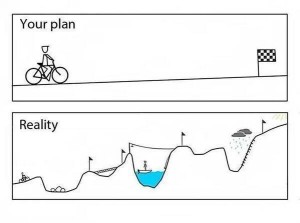
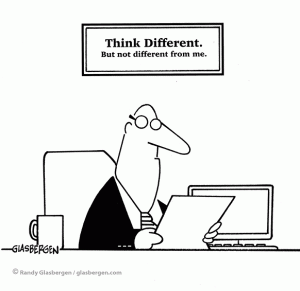
 As a family we ski quite a bit in the winter. We’re about two hours from Sugarloaf Mountain in Maine and the kids love it. A couple years ago, I would regularly launch off a series of ski jumps in the terrain park. It’s exhilarating. Drop down to approach the ramp, race up to the lip of the jump and sail high to a smooth landing on the downhill other side. Fifteen feet? Twenty? I probably exaggerate but it feels really far. If you get the speed right it’s smooth, easy and fun. I could do it all day. What a blast.
As a family we ski quite a bit in the winter. We’re about two hours from Sugarloaf Mountain in Maine and the kids love it. A couple years ago, I would regularly launch off a series of ski jumps in the terrain park. It’s exhilarating. Drop down to approach the ramp, race up to the lip of the jump and sail high to a smooth landing on the downhill other side. Fifteen feet? Twenty? I probably exaggerate but it feels really far. If you get the speed right it’s smooth, easy and fun. I could do it all day. What a blast.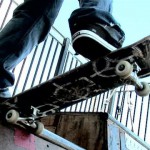 True story: a couple of years ago a friend came over to visit and chat about some business ideas. My daughter was napping upstairs, my wife was out running, and the two of us were sitting in lawn chairs in the backyard watching our two boys (6 and 8 at the time) try to “drop in” on a skateboard into the half pipe ramp we had built together.
True story: a couple of years ago a friend came over to visit and chat about some business ideas. My daughter was napping upstairs, my wife was out running, and the two of us were sitting in lawn chairs in the backyard watching our two boys (6 and 8 at the time) try to “drop in” on a skateboard into the half pipe ramp we had built together.